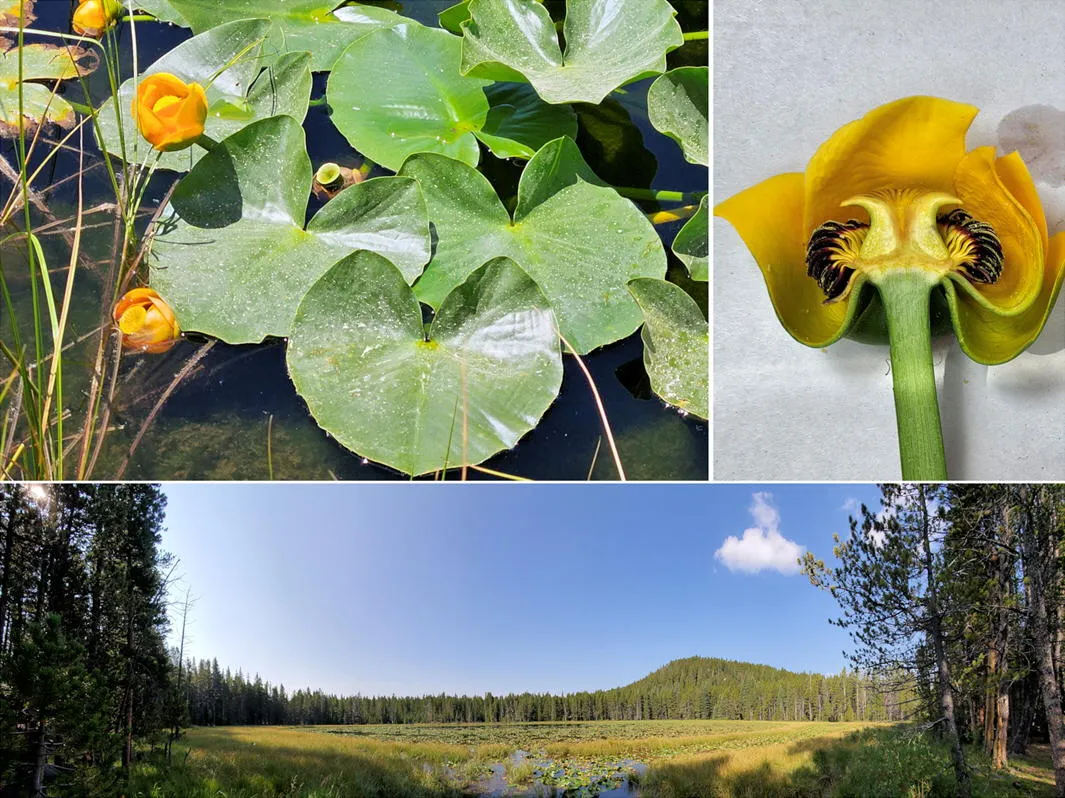By Tom Schweich
I was on the road this past week, botanizing the subalpine zones of Lake County. One of my favorite places is Lily Lake between Leadville and Tennessee Pass. In theory a forest road goes there, but in practice it’s about a mile hike, and the Lily Lake Loop, a Pike San Isabel National Forest trail, passes by the lake.
What’s at Lily Lake? The “Rocky Mountain Pond Lily” — Nuphar polysepala Engelm.
Water lilies do not occur in Golden. The closest ponds with water lilies are found around Eldora and Nederland in Boulder County.
Water lilies are part of a "primitive" group of flowering plants. By primitive, botanists mean that the group evolved and became distinct very early in the evolution of flowering plants – sometime in the Cretaceous (145 to 66 million years ago). One line of evidence to support this is that they have a mix of traits normally not found together in the same plant. Specifically, they have traits of both monocots (grasses and true lilies) and dicots (daisies and roses), two groups into which flowering plants may be divided. Apparently, water lilies evolved before the separation of these two great evolutionary lines.
Our plant was first recognized as something worthy of study from a fragmented collection by Dr. F. V. Hayden (of the future “Hayden Expeditions”) who collected it in Idaho in 1860. The first Colorado collection was an 1862 collection by a Miss Merrill made at Gibson’s Lake, near Long's Peak, but not with enough material to describe the plant. Finally, Dr. Charles C. Parry gathered ample material in 1864 at Osborn's Lake, also in the Long’s Peak region, which Dr. George Engelmann used in writing a description. Neither Gibson’s Lake nor Osborn’s Lake are current names for lakes in either Larimer or Boulder Counties.
George Engelmann, M.D. (1809 – 1884) was a German-American botanist. He was instrumental in describing the flora of western North America and was particularly active in the Rocky Mountains and northern Mexico. Living in Saint Louis, Missouri, Engelmann was visited by many western explorers on their way west and again upon their return, so he got a first look at freshly collected western plants. Engelmann was a founder and longtime president of the St. Louis Academy of Sciences and encouraged the wealthy St. Louis businessman Henry Shaw to develop his gardens to be of scientific as well as public use. "Shaw's Gardens" became the Missouri Botanical Garden, a premier western botanical garden and research center.
We have eleven plants that are native to Golden that Engelmann first identified for science, including three cacti and the buffalo grass that I wrote about recently.
Most of these characters, like Charles Parry MD and George Engelmann MD, we have met before, and I’m sure we will see them again. William A. Weber, botanist at University of Colorado – Boulder, wrote Parry’s biography, titled, “King of Colorado Botany: Charles Christopher Parry, 1823-1890.”









